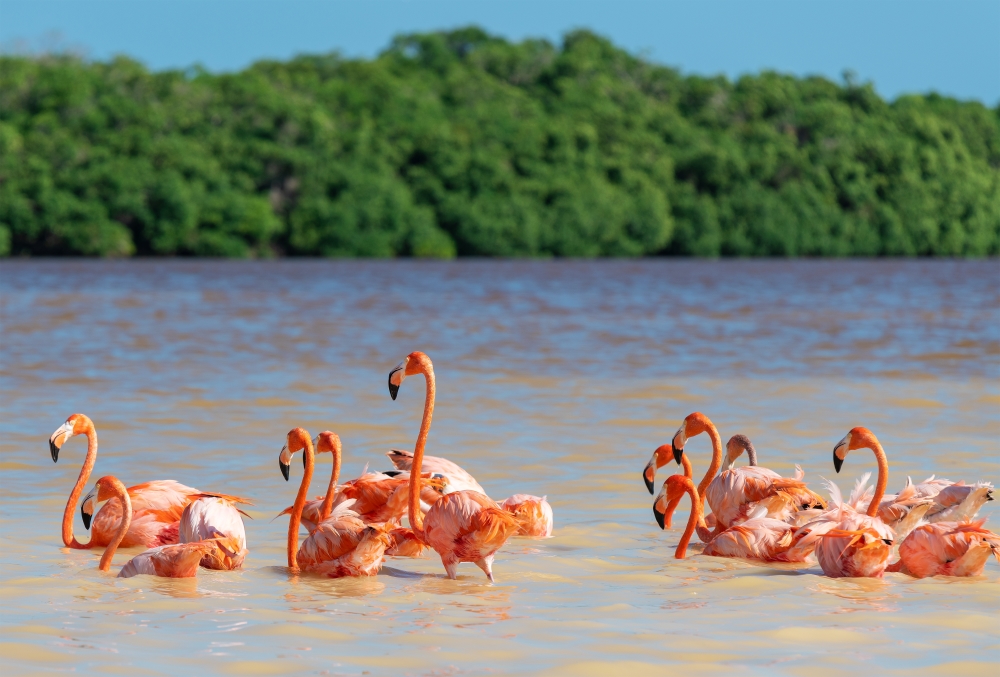
Governments around the world are accounting for nature in their fiscal planning at an accelerating pace, signaling a shift in how economies value and finance our ecological life-support systems
Mérida - UNDP's Biodiversity Finance Initiative (BIOFIN) announced today that it has supported partner governments in unlocking over US$2.7 billion in finance for nature globally, as countries increasingly integrate nature into fiscal planning and redirect financial flows from nature-negative to nature-positive policies and activities.
This is a leap from US$1.7 billion in 2024 to now surpassing US$2.7 billion in 2025. As the number of countries supported by BIOFIN expands, this figure is expected to increase exponentially in the coming years.
The announcement came at the 11th Latin America and the Caribbean Regional Dialogue on Biodiversity Finance in Mérida, Mexico, marks a step change in how countries plan, budget, and invest for a future.
“These results demonstrate how systematic, nationally-owned approaches can transform public budgets, markets, and investment decisions to align with the goals of the Kunming–Montreal Global Biodiversity Framework, for win-win outcomes for people and for the planet,” said Midori Paxton, Nature Hub Director, United Nations Development Programme.
Biodiversity finance solutions supported by BIOFIN — from green bonds and ecological fiscal transfers to biodiversity-linked insurance and subsidy reforms - are now being implemented in 41 countries, and BIOFIN is now working with 91 additional countries. Together, this represents one of the largest efforts ever to integrate nature-positive priorities in national economic policy.
BIOFIN is implemented in partnership with the European Commission and the Governments of Germany, Switzerland, Norway, Belgium, Flanders, the UK, Canada, and France, and the Global Environment Facility.
Amid changes to traditional aid, BIOFIN’s approach focuses on strengthening public finance institutions, budget frameworks, and policy instruments that enable governments to mobilize sustained, domestic flows of finance aligned with nature-positive activities for the protection of the ecological resources that underpin environmental and human health, our supply chains, communities, and climate resilience.
“These systemic reforms strengthen economies and deliver tangible benefits for people and the planet", said Carlos Manuel Rodríguez, CEO and Chairperson of the Global Environment Facility. "Through the GEF–UNDP partnership, governments are recognizing the economic potential of putting nature at the center of development planning,” he said. “By aligning budgets and financial systems with nature-positive policies, they are mobilizing funds in support of the implementation of the Convention on Biological Diversity and opening new pathways for growth, resilience, and long-term stability.”
The Biodiversity Finance Gap
Approximately one million animal and plant species are currently threatened with extinction, many within the coming decades. This decline is primarily driven by human activities, including land and sea use changes, direct environmental exploitation, failure to curb climate change with greater urgency, pollution, and the introduction of invasive species.
Nature is the foundation of our societies and the global economy, with more than half of global GDP moderately or heavily dependent on nature and every country, organization, and company reliant on a healthy planet for resources, stability, and resilience. When nature declines, so do jobs, productivity, and growth.
The biodiversity finance gap — the estimated shortfall between what the world currently spends to protect and restore nature and what’s needed to halt biodiversity loss — is over $700 billion every year. Innovative finance solutions offer governments new routes to catalyzing resources for nature and biodiversity, hand-in-hand with development and economic benefits.
This builds on global recognition that addressing climate change is inseparable from transitioning to a nature-positive future — a priority as countries prepare for COP30 in Belém, Brazil. Healthy ecosystems are vital for absorbing carbon, reducing disaster risks, and nature-positive transitions offer development and economic opportunities that can be powerful levers of change.
Tangible progress:
In Zambia, a landmark green bond has directly mobilized US$150 million for renewable energy, while Malaysia’s Ecological Fiscal Transfer (EFT) scheme now channels hundreds of millions of dollars annually to states protecting nature.
This week, the Mexican government is marking the 10-year anniversary of BIOFIN in Mexico, having seen over US$14 million catalyzed for biodiversity-related initiatives with BIOFIN support.
Kazakhstan has integrated biodiversity into national budget systems, ensuring new long-term financing for ecosystem restoration. As of 2024, the country designated 29 million hectares as protected areas, covering 10.77 percent of the land.
In Colombia and Ecuador, greening of loans to small and medium enterprises and environmental funds is driving investments in protected areas and sustainable production.
The Philippines has institutionalized biodiversity finance planning across government agencies, unlocking sustained, recurring budget allocations for nature.
The Biodiversity Finance Plans (BFPs) developed through BIOFIN are formally recognized under the Kunming–Montreal Global Biodiversity Framework as a key mechanism to translate national commitments into measurable action to mobilize finance for nature.
Categories
Countries
Archives
- April 2024 (5)
- March 2024 (3)
- February 2024 (6)
- January 2024 (3)
- December 2023 (1)
- November 2023 (7)
- October 2023 (5)
- September 2023 (2)
- August 2023 (2)
- July 2023 (1)